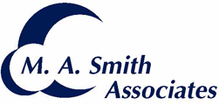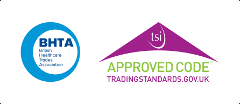- What are the legal requirements for manual handling training?
- Who should be trained?
- Do you provide training in the care sector for direct payments recipients, parents and carers?
- How much time should be allocated to training?
- If I am a supervisor what training do I need?
- How often should my staff receive training?
- How many people can be trained on one course?
- Can you travel to our training venue or do you have a training facility?
- We have a mixed staff group. Can you tailor the course programme to meet all their needs if they were to attend the same course?
- What information can I expect to receive prior to the training event?
- Do you provide training materials for course participants to take away with them?
- What should be included in training content?
- How do you ensure that your course materials are current?
- What records do you supply managers with following training?
- What if there is a problem either before, during or after training provision?
Q1. What are the legal requirements for manual handling training?
A. The Health & Safety at Work Act 1974
The act specifies the need for information, instruction, training and supervision.
The Management of Health and Safety at Work Regulations 1999 and approved code of practice (ACOP)
All employees, including senior management should receive relevant training:
- On recruitment
- On exposure to new hazards or increased risks
- When the system of work changes
- Repeated periodically
- Provided during working hours
If training has to take place out of working hours this must be regarded as an extension of working hours and the employee must be paid. This has financial implications in that staff cover will be required.
Manual Handling Regulations 1992 (as amended) Guidance on Regulations
The guidance implies the need for training “as a complement to a safe system of work” and that “effective training has an important part to play in reducing the risk of manual handling injury”
Workers need to be taught:
- How to recognise and avoid potentially hazardous MH operations
- The purpose and function of risk assessment, in particular the task; the individual capability of the handlers; the load; the working environment; other factors.
- How to reduce risk from unavoidable or unfamiliar handling operations
- The proper use of handling equipment
- The features of the working environment that contribute to safety
- The importance of good house keeping
- Safer handling practice and safe systems of work
“Training should be based on principles rather than techniques”
Provision and Use of Work Equipment Regulations 1998 (ACOP and guidance)
Every employer shall ensure that all persons who use work equipment have received adequate training, including training in the methods which may be adopted, and risk entailed and precautions to be taken. This must include supervisors.
Lifting Operations and Lifting Equipment Regulations 1998 and ACOP
LOLER 1998 states that workers must be able to select the most suitable item of lifting equipment and ensure that lifting which involves this equipment is carried out safely (e.g. within the safe working load of the item), is properly planned, with pre-use checks carried out appropriately at the start of each shift.
National Minimum Required Standards – Care Standards Act 2000
Induction and foundation standards are now an established part of the social care sector. These include minimum standards for moving & handling training and state that employees should receive:
- Induction training within 6 weeks
- Foundation training within 6 months
- Refresher training annually
Professional multidisciplinary organisations such as National Back Exchange believe that workers should not be allowed to handle loads/clients until they have received training.
Q2. Who should be trained?
A. All staff involved in the handling of loads / people, including agency and bank staff, and medical staff where appropriate. They should not be allowed to handle loads / people until they have received adequate training. Ref: HSCA (1998) Manual Handling in the Health Services HSE: Sudbury.)
Q3. Do you provide training in the care sector for direct payments recipients, parents and carers?
A. Yes. We have over the years had a great deal of involvement in this type of training. It makes sense to ensure that those who work closely with individuals who require moving & handling receive training to reduce the risk of injury to themselves and the person whom they are handling - whether or not they are paid employees.
NB: It is also important; if you are a direct payment recipient to note, that if you are asking people to move & handle you in a specific way, that this is completed safely and that you need to take account of their individual capabilities /limitations. To ignore this may result in you being held responsible for any injuries incurred.
Q4. How much time should be allocated to training?
A. National Back exchange promotes that “the time allocated for training needs to permit achievement of competency”. A training needs analysis will determine local need; however, practical experience suggests that the following minimum times should be applied. This is supported by HSE and the “All Wales Passport Scheme”:
Induction training: Back awareness theory session including safe principles – ½ day
People Handling skills – ½ day
Foundation Training: Load Handling – 1 day
People Handling – 2 Days
In Additional To This Training:
-
Risk Assessment – A further 2 days
-
Key / Link Workers – A further 3 days
-
MH Trainers - A further 5 days
-
Safe Use of Equipment – 1 day
-
Specific specialist areas may require further further specialist skill development training. Although this is mainly found in the area of people handling e.g. paediatric, spinal injuries, physical disabilities, learning disabilities, dementia, bariatric etc. A greater demand for this in the area of object handling is occurring, as much object handling has historically occurred in a classroom which has no relation to the handling environment and loads being handled in the work place. We therefore offer realistic skill development based on work activities e.g. we have already completed work of this kind in the following areas: agriculture, arboriculture, ground and sports turf, highways, refuse collection, catering and hospitality, offices etc…
Q5. If I am a supervisor what training do I need?
A. It is recommended that you are trained to Key / Link Worker level to enable you to monitor & supervise your staff adequately following their training provision.
Q6. How often should my staff receive training?
A. HSE as well as professional guidelines recommend refreshers “at least annually”
Q7. How many people can be trained on one course?
A. This will vary according to the type of course and previous training. Professional guidelines however do recommend a ratio of 6 learners to 1 trainer for practical skill development.
Q8. Can you travel to our training venue or do you have a training facility?
A. We can deliver training throughout the UK although we do have access to a wonderful training facility in Worcestershire if you would prefer to come to us.
Q9. We have a mixed staff group. Can you tailor the course programme to meet all their needs if they were to attend the same course?
A. As training providers all of our trainers are highly experienced in meeting different needs within staff groups and will do their utmost to ensure this.
Q10. What information can I expect to receive prior to the training event?
A. Once you have enrolled /booked a course. We will provide pre course information including the programme, aims & learning outcomes, how to let us know about any special needs participants may have, plus guidance on suitable attire etc.
Should you have any further queries; then please do not hesitate to give us a call to discuss.
Q11. Do you provide training materials for course participants to take away with them?
A. We provide comprehensive handbooks and/or associated handouts for each participant.
Q12. What should be included in training content?
A. Standard elements of training should include:
- Current & relevant legislation and professional guidelines where relevant
- Local policies and procedures
- Structure & function of the musculoskeletal system including spinal mechanics
- Importance of musculoskeletal care and posture, risk factors of musculoskeletal disorders
- Assessment of Risks (TILEO) - Of tasks (including unexpected)
- The limits of individual capability (handler & that of others)
- Loads (both inanimate & animate)
- Environment and the importance of good housekeeping
- Other factors (that influence working conditions)
- Importance of an ergonomic approach
- Principles of normal human movement and relating it to manual handling
- Safe management of inanimate loads
- Promotion of independence - People handling
- Handling strategies for people with impaired mobility – People handling
- Dealing with unpredictable occurrences
- Use of equipment
- Problem solving
- How to report accidents and incidents
Please note that any training should be followed up by management to ensure safe supervision and monitoring of handling practice. This may be supported by Key / Link workers who are competent practitioners and able to support staff who have received training.
Q13. How do you ensure that your course materials are current?
A. We are constantly updating ourselves to ensure that the information and skills we provide is up to date. We carry out annual reviews of our course materials and update them according to latest research, legal and professional developments.
Q14. What records do you supply managers with following training?
A. We supply detailed records of who has/has not attended training; topics covered and any factors that require action from managers to enable them to introduce safer practices and support individuals within their individual capabilities within the work place. It is necessary for us to provide within this feedback documentation of a participant’s ability/inability to meet learning outcomes to enable future learning needs to be identified.
Q15. What if there is a problem either before, during or after training provision?
A. We will do our best to resolve any problems or issues with sensitivity and urgency. All trainers of MASA must follow our in house procedures in such eventualities and will fully cooperate with your organisation and any grievance procedures should this become necessary. We do however ask that you report any issues both directly with the trainer at the time and also to a senior officer at the office of MASA immediately to ensure we are able to fulfil our commitment to you without delay.

